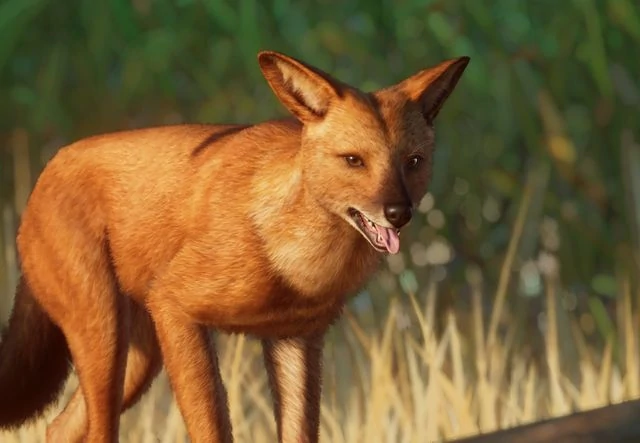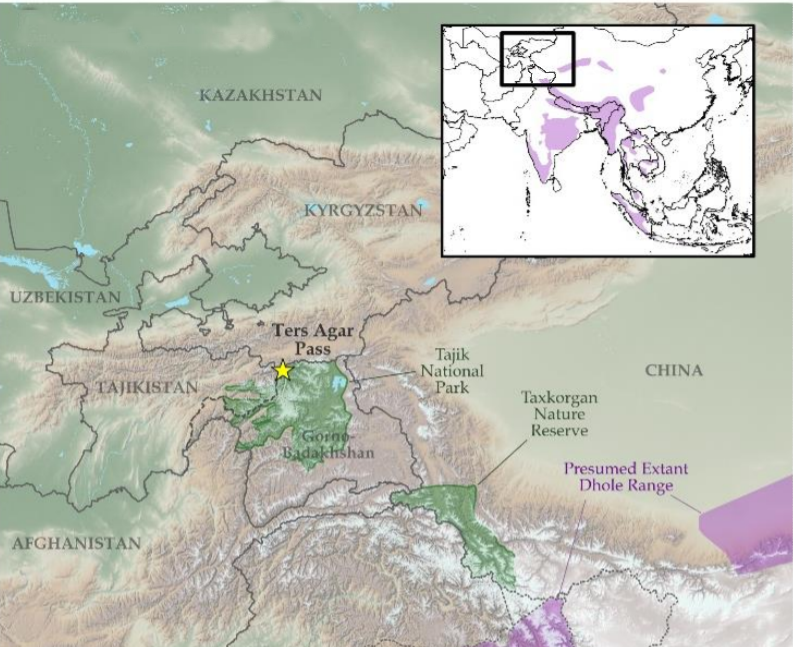Important Facts For Prelims
Dholes
- 07 Feb 2022
- 2 min read
Why in News?
A new study has reported the presence of dholes or Asiatic wild dogs in the high mountains of Central Asia nearly 30 years after their presence was last recorded.
- The animals have been discovered in the Bek-Tosot Conservancy in the Osh region of southern Kyrgyzstan, a few kilometres from the Tajik border. It lies in the Pamir mountain range of Xinjiang Autonomous Region, China.
What do we Know About Dholes?
- About: Dhole (Cuon alpinus) is a wild carnivorous animal and is a member of the family Canidae and the class Mammalia.
- They are also known as Asian wild dogs.
- Habitat:

- Historically, dholes purportedly occurred throughout southern Russia, all across central Asia, south Asia and southeast Asia.
- According to recent research and current distribution maps, they are restricted to south and southeast Asia, with the northernmost populations in China.
- In India, they are found in three clusters across India namely the Western and Eastern Ghats, central Indian landscape and North East India.
- Karnataka, Maharashtra and Madhya Pradesh rank high in the conservation of the endangered dhole in India, according to a study (2020).
- Ecological role: Dholes play an important role as apex predators in forest ecosystems.
What is the Conservation Status of Dholes?
- IUCN List of Threatened Species: Endangered
- Convention on International Trade in Endangered Species of Wild Fauna and Flora (CITES): Appendix II
- Wildlife Protection Act, 1972 : Schedule II
Why is their Population Decreasing?
- Ongoing habitat loss: Due to deforestation and fragmentation of forest corridors.
- Depletion of prey base: Ungulates are the main prey of dholes whose population is rapidly decreasing due to excessive hunting and habitat loss.
- Persecution due to livestock predation and disease transfer from domestic and feral dogs.





